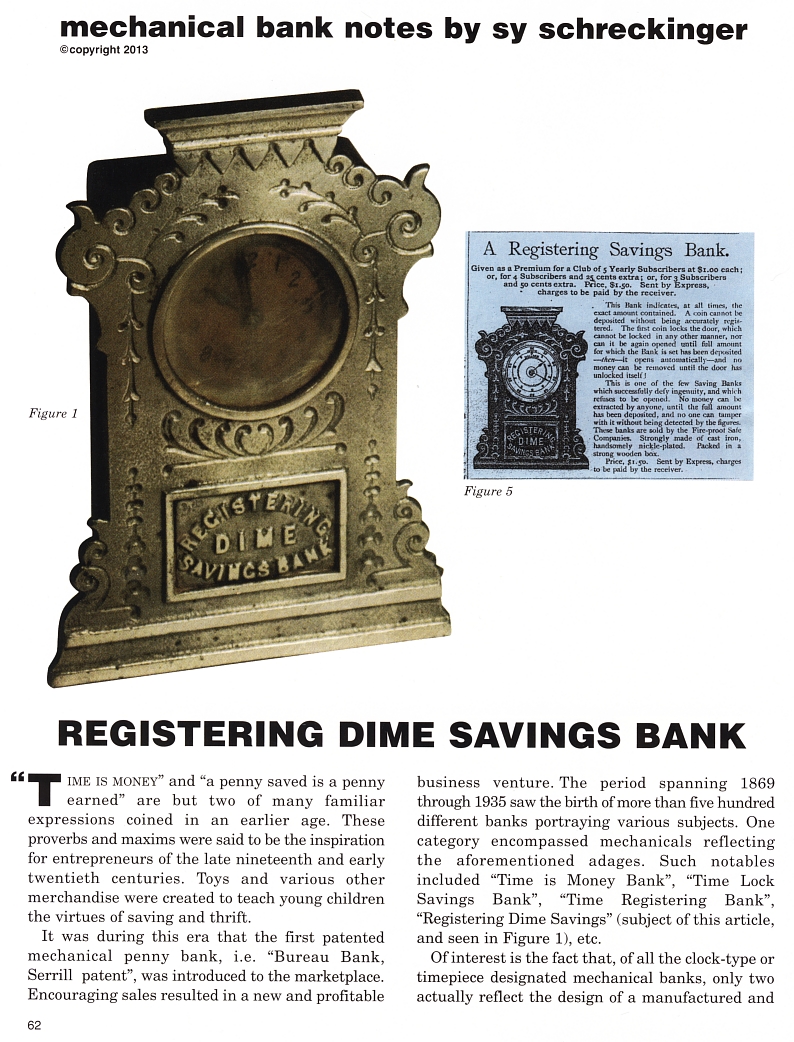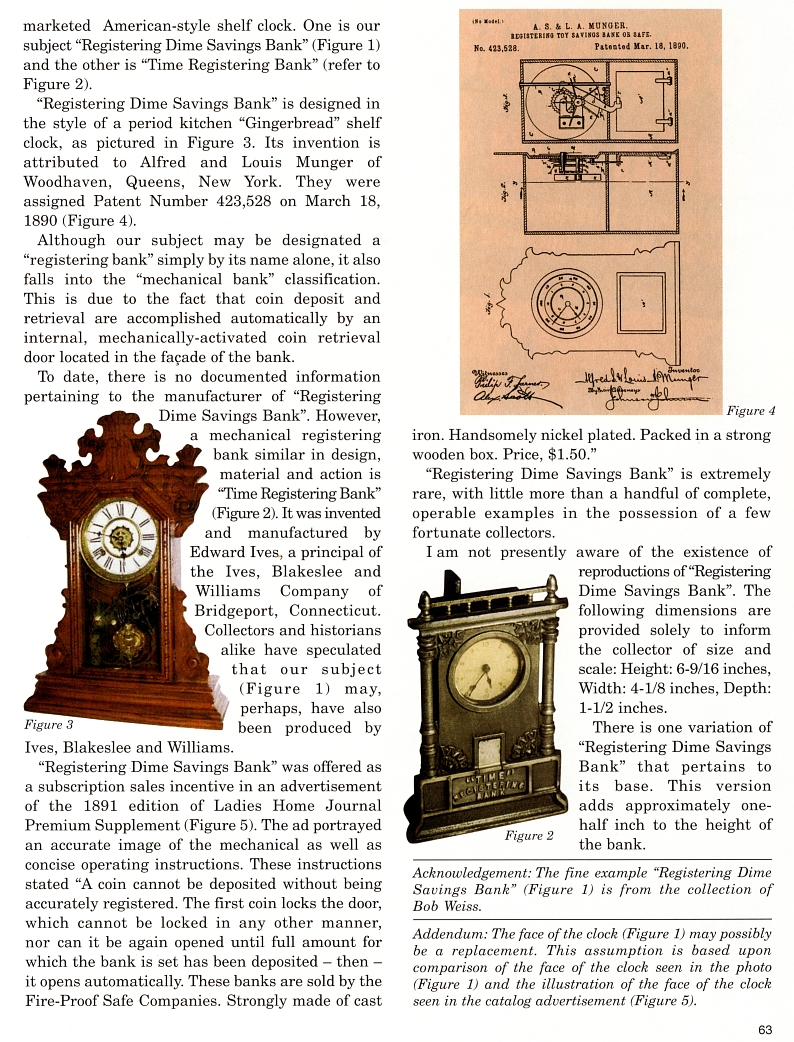|
REGISTERING DIME SAVINGS BANK
by Sy Schreckinger ANTIQUE TOY WORLD Magazine January,
2013
TIME IS MONEY" and "a penny saved is a penny earned" are but two of
many familiar expressions coined in an earlier age. These proverbs and
maxims were said to be the inspiration for entrepreneurs of the late
nineteenth and early twentieth centuries. Toys and various other
merchandise were created to teach young children the virtues of saving
and thrift.
It was during this era that the first patented mechanical penny
bank, i.e. "Bureau Bank, Serrill patent", was introduced to the
marketplace. Encouraging sales resulted in a new and profitable business
venture. The period spanning 1869 through 1935 saw the birth of more
than five hundred different banks portraying various subjects. One
category encompassed mechanicals reflecting the aforementioned adages.
Such notables included "Time is Money Bank", "Time Lock Savings Bank",
"Time Registering Bank", "Registering Dime Savings" (subject of this
article, and seen in Figure 1), etc.
Of interest is the fact that, of all the clock-type or timepiece
designated mechanical banks, only two actually reflect the design of a
manufactured and marketed American-style shelf clock. One is our subject
"Registering Dime Savings Bank" (Figure 1) and the other is "Time
Registering Bank" (refer to Figure 2).
"Registering Dime Savings Bank" is designed in the style of a
period kitchen "Gingerbread" shelf clock, as pictured in Figure 3. Its
invention is attributed to Alfred and Louis Munger of Woodhaven, Queens,
New York. They were assigned Patent Number
423,528 on March 18, 1890
(Figure 4).
Although our subject may be designated a "registering bank" simply
by its name alone, it also falls into the "mechanical bank"
classification. This is due to the fact that coin deposit and retrieval
are accomplished automatically by an internal, mechanically-activated
coin retrieval door located in the facade of the bank.
To date, there is no documented information pertaining to the
manufacturer of "Registering Dime Savings Bank". However, a mechanical
registering bank similar in design, material and action is "Time
Registering Bank" (Figure 2). It was invented and manufactured by Edward
Ives, a principal of the Ives, Blakeslee and Williams Company of
Bridgeport, Connecticut. Collectors and historians alike have speculated
that our subject (Figure 1) may, perhaps, have also Figure 3 been
produced by Ives, Blakeslee and Williams.
"Registering Dime Savings Bank" was offered as a subscription sales
incentive in an advertisement of the 1891 edition of Ladies Home Journal
Premium Supplement (Figure 5). The ad portrayed an accurate image of the
mechanical as well as concise operating instructions. These instructions
stated "A coin cannot be deposited without being accurately registered.
The first coin locks the door, which cannot be locked in any other
manner, nor can it be again opened until full amount for which the bank
is set has been deposited then it opens automatically. These banks
are sold by the Fire-Proof Safe Companies. Strongly made of cast iron.
Handsomely nickel plated. Packed in a strong wooden box. Price, $1.50."
"Registering Dime Savings Bank" is extremely rare, with little more
than a handful of complete, operable examples in the possession of a few
fortunate collectors.
I am not presently aware of the existence of reproductions of
"Registering Dime Savings Bank". The following dimensions are provided
solely to inform the collector of size and scale: Height: 6-9/16 inches,
Width: 4-1/8 inches, Depth: 1-1/2 inches.
There is one variation of "Registering Dime Savings Bank" that
pertains to its base. This version adds approximately one- half inch to
the height of the bank.
Acknowledgement: The fine example "Registering Dime Savings
Bank" (Figure 1) is from the collection of Bob Weiss.
Addendum: The face of the clock (Figure 1) may possibly be a
replacement. This assumption is based upon comparison of the face of the
clock seen in the photo (Figure 1) and the illustration of the face of
the clock seen in the catalog advertisement (Figure 5). |


